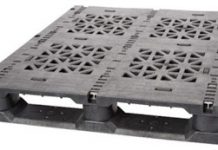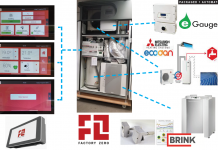Tom Konrad, CFA
With new climate legislation or a renewable portfolio standard unlikely now that Republicans control the US House of Representatives, progress on clean energy is likely to come mostly from action at the state level, and from regulation at agencies such as the EPA, rather than national legislation.
Why Energy Efficiency Standards Make Economic Sense
One type of regulation that is fairly uncontroversial is improving energy efficiency standards, that is regulation of the amount of energy an appliance or other device can consume during normal use. In an efficient market, regulation might bring non-financial benefits, but those benefits would come at a the cost of making the market less efficient. However, if a market is not efficient, then regulation not only has the potential to bring non-financial benefits, it can also bring financial gains by making the market more efficient. This is the case with efficiency standards: they not only save energy, they come with a net economic benefit.
For example, when you acquired your last mobile phone, it’s extremely unlikely that the energy use of the wall charger even crossed your mind as a factor in you decision of which phone to buy. Even if you had considered it, you probably would not have been able to determine what any given charger’s usage profile was, and the amount of time and effort you put into determining your charger’s energy use would have been prohibitive. Your time would probably have been much more valuable than the energy you might save by buying a phone with an efficient charger.
For all these reasons, the free market does not provide an incentive to makers of phone chargers to expend any effort or money making sure their chargers are efficient. Even if one cent of added cost to a phone charger would save the owner $1 a year in electricity, the rational manufacturer would choose not to spend that extra cent, because it would bring no benefit in terms of additional sales.
This is where regulation can bring a net benefit. While $1/year might not be a lot of money for an individual cell phone user, the number of cell phones sold each year is enormous, and the collective savings for society are substantial. Business-minded conservatives can support energy efficiency standards because of the economic benefit, while environmentally minded liberals can support the energy savings and associated reduction in CO2 and other pollution.
These facts have not been lost on regulators and legislators. Congress passed the first National appliance standards in 1987, with several pieces of additional legislation passed by both Democratic and Republican controlled legislatures since then. Currently more than 50 products are covered by a variety of highly cost effective federal standards, most of which were based on existing state standards. Economic studies by non-partisan economic researchers have established the cost effectiveness of these standards to be at least 2.7 to 1 [source, pdf].
For every dollar spent complying with an efficiency standard, there has been a net benefit of at least $2.70. From an economics standpoint, there is a strong case for tightening existing standards until the marginal benefit only slightly exceeds the cost of more rigorous standards, and also for expanding efficiency standards to other energy consuming devices.
Power Integrations (NASD:POWI)
A significant beneficiary of any trend towards increasingly efficient electronics will be Power Integrations, which I decided to take another look at after it showed up in my search for dividend-paying energy efficiency stocks. The company is a leading supplier of high-voltage integrated-circuit (IC) based power conversion devices, with about 80% of the market for the most highly integrated power supplies.
Historically, most power conversion was done with linear transformers. Linear transformers, which convert power with coils of copper wire, are not only bulkier than IC transformers, they are considerably less efficient. Typically, half of the power is lost in conversion, and sometimes as much as 80%. With IC transformers, as little as 20% may be lost, at only about 30% in additional cost. As copper prices rise and volumes increase, the cost advantage of linear transformers should decrease. (Most of this information is from an article at The Economist.)
It’s not just cell phones that require DC current to operate: nearly all electronics require some DC conversion. Computers, DVD players, LCD televisions, microwaves, the list is practically endless. That means there is plenty of scope to expand the market for efficient IC transformers as prices fall and regulators apply efficiency standards to more devices. LED lighting also requires compact, efficient, power conversion, and Power Integrations highly integrated transformers are particularly well placed for this fast-growing market where space is often at a premium. (Incidentally, the growth of the market for LEDs is driven not only by lighting efficiency standards, but also by the rapidly falling cost of LEDs.)
Valuation
The problem with all this growth potential is that the market already knows about it. Over the last 5 years, revenues have grown at a 23% compound annual rate. Going forward, the consensus prediction is 15% compound annual growth. The most dangerous time to own a growth stock is when growth begins to slow, because not only do earnings repeatedly fail to meet expectations, but investors begin to re-evaluate lofty P/E ratios as their expectations of future growth fall.
Although Power Integrations has a commendably strong balance sheet, with no debt and a stratospheric current ratio of 6, it trades at a 22 trailing and 20 forward P/E ratio, and 3.5 times revenues (at the $37.32 close on Feb 1). That’s not bad at the historical 23% growth rate, but does not look so good if you’re only expecting 15% growth going forward.
Overall, I like the business, but this seems like a company to watch and buy after a negative earnings surprise or two (the last two quarters beat estimates by 15% and 8%.) The long term fundamentals of the business are sound, so it makes sense to wait until other investors are depressed about the short term.
The company is expected to release quarterly earnings tomorrow. If they miss the consensus estimate of $0.41 earnings and $70.2M revenue, I’d wait a couple weeks for the news to sink in, since the market tends to react more slowly to bad news than good. If they beat estimates, which is more likely given the strong economy last quarter, I plan to just sit back and wait another three months.
DISCLOSURE: No position.
DISCLAIMER: The information and trades provided here and in the comments are for informational purposes only and are no
t a solicitation to buy or sell any of these securities. Investing involves substantial risk and you should evaluate your own risk levels before you make any investment. Past results are not an indication of future performance. Please take the time to read the full disclaimer here.








